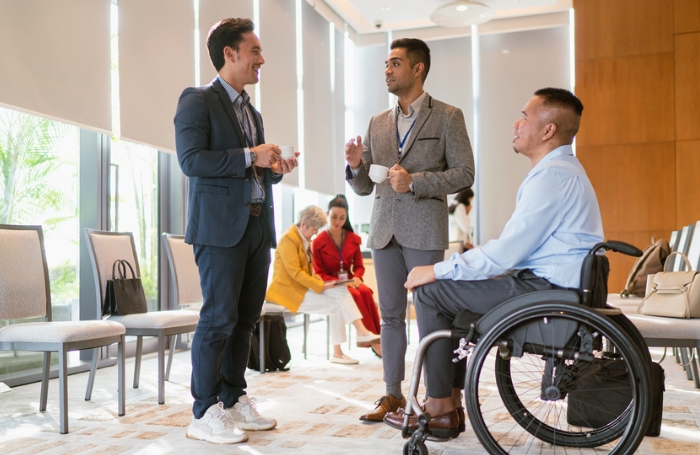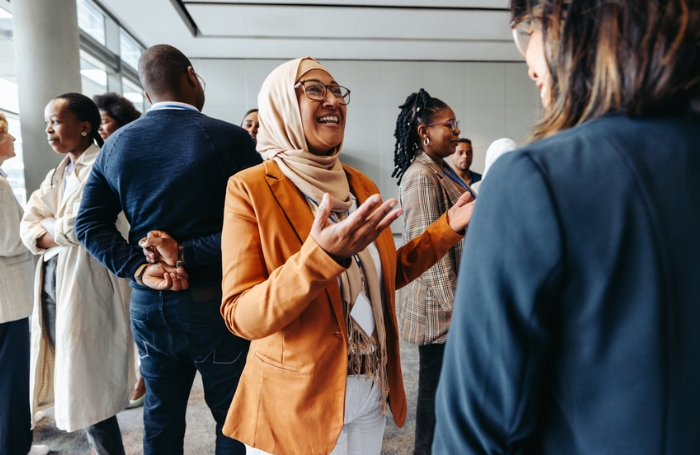Events and meetings - whether a quick Teams catch-up, an after-work gathering, or a large-scale awards ceremony or conference - are central parts of business life. We now live in a much more interconnected world, where people from diverse backgrounds collaborate and share ideas, making it important to approach hosting events and meetings more inclusively.
Inclusive thinking ensures every attendee feels seen, valued, and respected.
Furthermore, inclusive events foster belonging, encourage broader participation, and reflect the values of equity and accessibility. By considering different needs, backgrounds, and perspectives from the outset, planners can create experiences that are not only welcoming but also more impactful and memorable.
With awards season, conferences, and festive events on the horizon, now is the perfect time to consider how your events can be more inclusive.
To that end, RIBA has created an Inclusive Events Toolkit that pulls together guidance and best practices, resources, checklists and for those with little or no experience of events planning, a series of concise inclusive event templates for different types of scenarios.
The toolkit provides guidance that can be applied at any level of EDI knowledge and experience and consists of a suite of resources.

How do you start making your event more inclusive?
Before planning begins, it鈥檚 essential to define and communicate the event鈥檚 goals and purpose to all stakeholders. Understanding the nature of the event helps tailor it to the diverse needs of your audience.
Formal or structured events often follow a defined agenda, and feature these kinds of characteristics:
- A detailed agenda with defined timelines;
- Specific dress codes (eg. business or formal attire);
- Professional tone and language;
- Invitation-only attendance with RSVP;
- Formal venues (eg. conference centres, banquet halls);
- Clear objectives (eg. decision-making, celebrating achievements);
- Assigned roles (eg. host, speaker, moderator);
- Documentation (eg. minutes, reports);
- Strict adherence to timing;
Conversely, informal or unstructured meetings are events feature these characteristics:
- A relaxed and welcoming atmosphere;
- Flexible or minimal agenda;
- Casual attire;
- Open, free-flowing communication;
- Emphasis on personal interaction and relationship-building;
- Inclusive participation regardless of hierarchy;
- Interactive activities (such as games or shared meals);
- Minimal formalities;
- Space for creativity and innovation;
What to consider if your event is virtual
If your meeting or event is virtual, it鈥檚 important to consider a different set of approaches, the toolkit recommends.
- Using accessible registration forms (such as Microsoft Forms with immersive reader support)
- Sharing briefing materials in advance, including access provisions and platform details
- Muting background noise and attendee microphones during presentations
- Acknowledging that video-on requirements can be a barrier - encourage attendees to turn off video if needed.

How to build accessibility into your event
Once clearly-defined objectives have been communicated, if your meeting or event is in-person it鈥檚 time consider accessibility.
Once you鈥檝e gathered the information you need, select venues that are accessible to the broadest range of individuals, featuring ramps, clear signposting, lifts, quiet spaces, and accessible, gender-neutral restrooms and changing facilities.
But there are other things to consider, the toolkit says:
- Timings: accommodate different time zones, cultural and religious observances, and care responsibilities. Allow sufficient time for participants to arrange their schedules and for planners to organise inclusion and access requests.
- Develop an inclusive agenda: actively reach out to and include diverse speakers and presenters from marginalised and underrepresented groups. Set time for open discussions and Question and Answer sessions.
- Communication: detail the kinds of access and inclusion provisions you will have, but also be open about the ones you don鈥檛.
- Consult with the communities you hope to include: approach every stage of the event with transparency and care, consulting with the communities to ensure the event is inclusive and accessible to them.
All of this guidance reflects some of the key principles included in the toolkit itself, which includes checklists, templates and other helpful documents.
The toolkit also illustrates that incorporating inclusion into any sized event or meeting doesn鈥檛 need to be complicated. With clear planning and the right resources, every event can be more accessible and effective.
Read more about more guidance on organising inclusive events.
Text by Neal Morris and Paul Hirons. This is a Professional Feature edited by the RIBA Practice team. Send us your feedback and ideas.
RIBA Core Curriculum topic: Inclusive environments.
As part of the flexible RIBA CPD 糖心logo, professional features count as microlearning. See further information on the updated RIBA CPD core curriculum and on fulfilling your CPD requirements as a RIBA Chartered Member.



